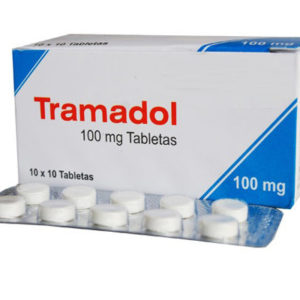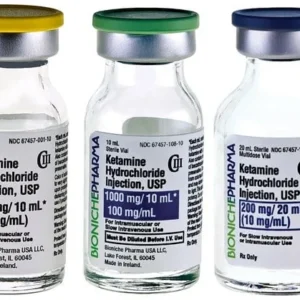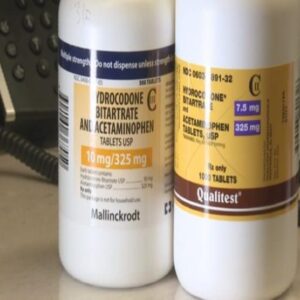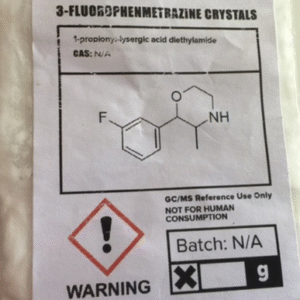Buy 3-FPM Powder (3-Fluorophenmetrazine) — Chemistry, Pharmacology & Safety Guide
3-FPM Powder (3-fluorophenmetrazine) is a synthetic stimulant of the phenylmorpholine/phenmetrazine family. It has been studied in forensic and preclinical contexts to understand stimulant pharmacology and structure–activity relationships. Scientific literature on 3-FPM is limited compared with older stimulants; hence, conclusions about long-term effects and safety are tentative. This page is informational only and does not encourage or facilitate recreational use.
3-FPM Powder Key chemical & physical data
| Attribute | Detail |
|---|---|
| Common name | 3-FPM (3-Fluorophenmetrazine) |
| IUPAC name | 2-(3-Fluorophenyl)-3-methylmorpholine (typical designation) |
| Synonyms | 3-Fluorophenmetrazine, 3F-Phenmetrazine, PAL-593M |
| CAS (reported) | 1350768-28-3 (varies in sources) |
| Molecular formula | C₁₁H₁₄FNO |
| Molecular weight | ~197.24 g·mol⁻¹ |
| Appearance | White to off-white crystalline powder (research descriptions) |
| Mechanism (putative) | Stimulant activity — likely dopaminergic and noradrenergic reuptake inhibition / release (analogue of phenmetrazine) |
| Typical research purity | Laboratory-grade standards normally ≥95% (varies by supplier; verify with GC/MS) |
| Storage | Cool, dry, dark conditions; follow institutional chemical handling protocols |
Pharmacology & effects of 3-FPM Powder
-
Pharmacology: 3-FPM is structurally related to phenmetrazine and other phenylmorpholines. Compounds in this family typically act as monoamine transporter substrates or reuptake inhibitors, producing increased extracellular dopamine and norepinephrine in animal models. Exact receptor/transporter affinities for 3-FPM are incompletely characterized in peer-reviewed literature.
-
Acute effects (reported in literature & case reports): increased energy, enhanced focus, stimulation, elevated heart rate, reduced appetite.
-
Potential acute adverse effects: tachycardia, hypertension, agitation, anxiety, insomnia, dehydration, hyperthermia, and in severe cases, cardiovascular or neuropsychiatric complications.
-
Tolerance & dependence: Limited data suggests stimulants of this class can produce tolerance; dependence potential exists theoretically, but human data on 3-FPM specifically are sparse.
-
Data gap: Controlled clinical trials and long-term safety studies are lacking — treat claims about therapeutic benefits or safety as unproven until validated.
Laboratory & forensic uses of 3-FPM Powder
-
3-FPM is primarily encountered in forensic toxicology, analytical method development, and preclinical pharmacology.
-
Recommended analytical techniques: GC–MS, LC–MS/MS, and NMR for identity and purity confirmation. Use validated reference standards and follow GLP.
3-FPM Powder Safety, harm-reduction (research context) & ethical considerations
-
Not for human consumption. This document is for researchers and educators. Any human-subject research requires ethics/IRB approval and clinical oversight.
-
Handling: Use appropriate PPE (gloves, eye protection, lab coat) and certified chemical fume hoods. Avoid skin contact and inhalation.
-
Storage & disposal: Follow institutional hazardous chemical storage and waste-disposal protocols.
-
Interactions & risk: Stimulants may interact dangerously with MAO inhibitors, certain antidepressants, and cardiac stimulants. Co-administration with other stimulants increases adverse effect risk.
-
Emergency: In cases of suspected acute toxicity, seek medical attention immediately and provide clinicians with accurate compound and exposure information.
Legal & regulatory status (general guidance)
-
Legal status varies by country and jurisdiction. Many countries regulate novel psychoactive substances under analogue laws or specific scheduling; others may have explicit listings.
-
Researchers must verify local laws and institutional policies before acquiring, storing, or studying controlled substances or their standards.
Table — Comparison: 3-FPM Powder vs related stimulants
| Compound | Class | Putative primary action | Typical research notes |
|---|---|---|---|
| 3-FPM | Phenylmorpholine/phenmetrazine analog | Dopamine / norepinephrine reuptake inhibition / release (likely) | Limited peer-reviewed data; used in forensic analyses |
| Phenmetrazine | Phenylmorpholine (historic drug) | Stimulant (appetite suppressant historically) | More clinical/older literature available |
| Amphetamine | Phenethylamine | Promotes monoamine release; reuptake inhibition | Well-characterized; clinical & research data abundant |
| 2-FMA | Fluoroamphetamine analog | Stimulant, dopaminergic/noradrenergic | Emerging research chemical; forensic interest |
Analytical & storage notes for researchers
-
Confirm identity/purity with GC/MS and/or LC-MS and retain certificate of analysis.
-
Store in airtight, light-blocking containers at recommended temperatures; minimize freeze-thaw cycles.
-
Label with lot, date received, storage conditions, and MSDS location.
Related Products
Selected external references (authoritative sources)
-
PubChem compound database — search “3-FPM” or related CAS.
-
European Monitoring Centre for Drugs and Drug Addiction (EMCDDA) — reports on novel psychoactive substances.
-
NCBI / PubMed — for peer-reviewed articles on phenmetrazine analogs and stimulant pharmacology.
FAQ (research & educational)
Q: Is 3-FPM clinically approved?
A: No — 3-FPM is not an approved therapeutic medication. It is primarily of interest in research and forensic contexts.
Q: Is 3-FPM safe for humans?
A: Safety in humans is not established. Stimulant compounds can have serious cardiovascular and neuropsychiatric risks; human use is not advised outside regulated clinical studies.
Q: How is 3-FPM detected in labs?
A: Typical detection/identification uses GC–MS, LC–MS/MS, and comparison with authenticated reference standards.
Q: Where can I find peer-reviewed data?
A: Search PubMed/NCBI for studies on phenmetrazine analogs, fluorinated stimulants, and forensic analytical reports.











Reviews
There are no reviews yet.